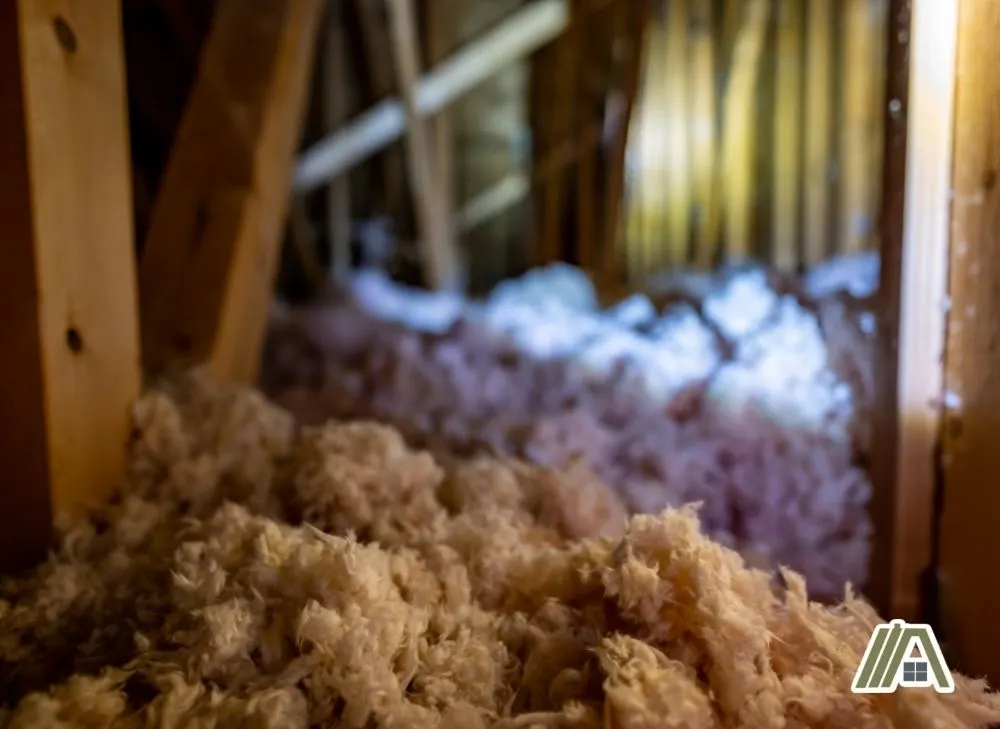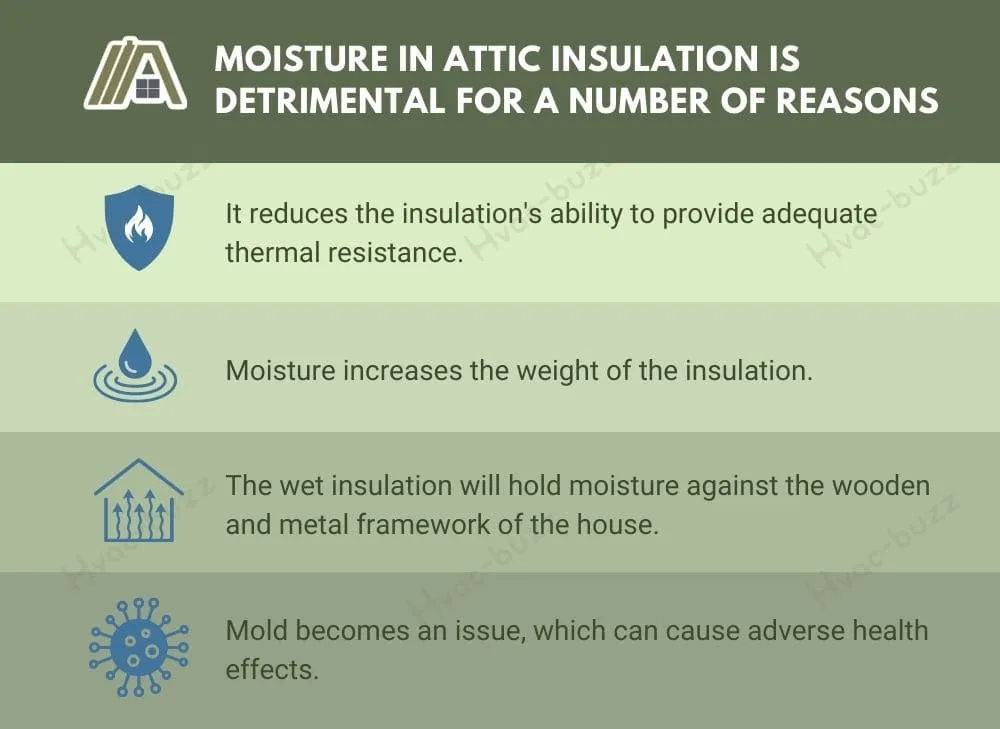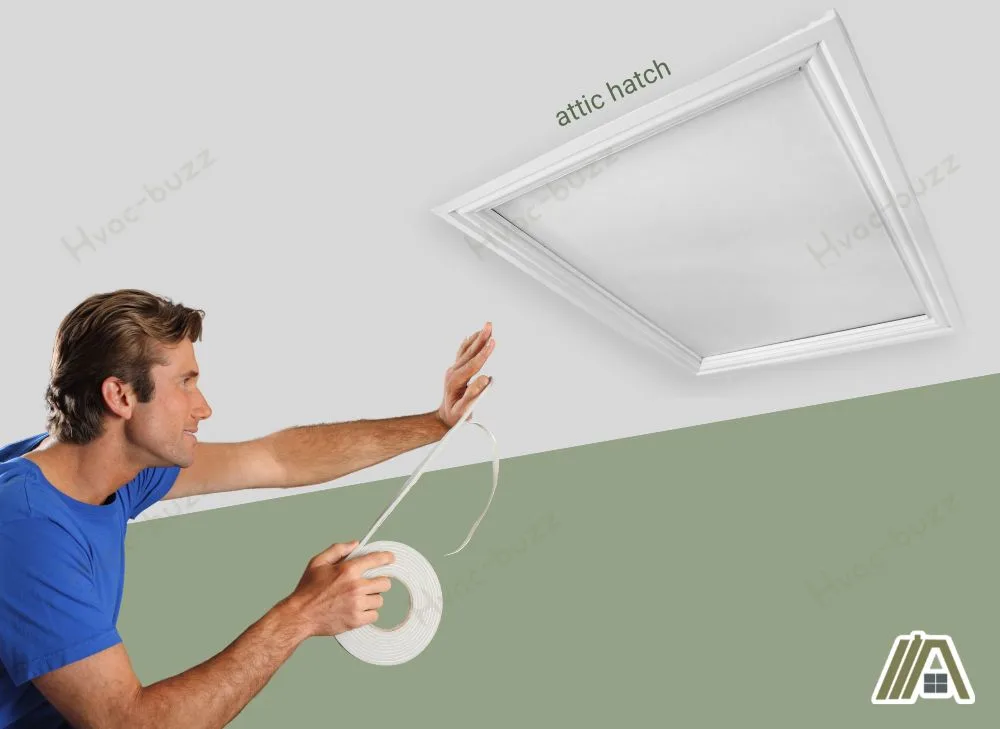Using valuable living area storage space for things that you pull out once a year or are storing for your one-day children or grandchildren seems like a waste. This is why attics are so valuable. However, this potential storage room is most often covered in a layer of insulation.
Installing plywood over this insulation is an effective way of utilizing the extra space, providing a solid foundation for storing items. However, the way that you install this plywood is important because you don’t want it to interfere with the function of the insulation.

Plywood can be installed over insulation in the attic to create storage room. The ceiling joists should be built up to above the line of insulation so that the plywood does not compress it. Cross beams can be added for extra support. Care should be taken to prevent moisture being trapped under the plywood.
The Plywood Cannot Compress the Insulation
Simply laying plywood over insulation isn’t a viable solution, even if there are ceiling joists hidden beneath the insulation that could support the weight of the plywood. This applies to both batts and loose-fill insulation.
With such a setup, insulation will be compressed by the weight of the plywood, the weight of everything stored in the attic, and the pressure from people walking around.
Why Compression is Bad
When insulation is compressed, it loses its effectiveness in regulating temperature and humidity. Let’s take a closer look at how compression affects batts and loose-fill.

Batt Insulation
Compression of batt insulation (usually fiberglass or mineral wool and sometimes cellulose) reduces the number of air pockets between the fibers. These pockets are vital to the function of batt insulation.
Air is a good thermal insulator because the molecules are far apart and it is difficult for heat to be conducted from one molecule to the other.
By separating the air into pockets, you further limit the chance of heat being transferred through conduction, as the chance of collision between air molecules in different pockets is low.
When the insulation is compressed, you still have the insulating power of the fibers but you lose the insulation of air. As the R-value was calculated with both, compression reduces the R-value.
Poorer insulation means greater heat loss in winter and greater heat gain in summer, which leads to higher bills as you expend more energy maintaining a desirable indoor environment.
Blown-in Insulation
Blown-in insulation is typically made of loose pieces or fibers that are blown or sprayed into an area to provide insulation.

When the insulation is compressed, the fibers are packed closer together, reducing the amount of air space between them, which has the same effect as compressing the air pockets in batt insulation.
How to Avoid This
Build up the Ceiling Joists
One of the most effective ways to avoid compression is to build up the ceiling joists until they are above the insulation line.
The first thing you need to do is measure how much extra height you need. Wearing appropriate gloves, measure from the distance from the top of the existing ceiling joist to the top of the insulation.
Go to your local hardware store and get planks that have this measurement as the width.
They should not be thicker than the existing ceiling joist. Otherwise, they will still cause some compression where they overlap the joists.
The length doesn’t really matter, as you can cut them to size or put two along the same joist.
Screw the new beams onto the joists at regular intervals.
Lay the plywood boards onto the raised joists and secure them in place.
The following video shows this process really well.
Add Cross-Beams for Strength if Necessary
If you are concerned about the additional weight being too concentrated on the joists or the plywood not being sufficiently supported in the center, you can add cross beams.
You would build up the joists as previously described. The only difference is that you increase the height to accommodate the cross beams. These can be installed perpendicular to the built-up joists or you can have longer beams crossing along the diagonal.
The cross beams should be secured to the raised joists and the plywood to the cross beams.
Plywood Mustn’t Trap Moisture Against Insulation
One caution with this method is to make sure that the plywood doesn’t end up trapping moisture against the insulation.

Why This Is Bad
Moisture in attic insulation is detrimental for a number of reasons.
First, it reduces the insulation’s ability to provide adequate thermal resistance.
Water fills the pockets or spaces in the insulation, displacing the air. Unlike air, water is an excellent conductor of heat.
As a result of becoming wet, the R-value (resistance to heat flow) can decrease by up to 50%! The insulation can become saturated in extreme cases, making it nearly useless.
Secondly, moisture increases the weight of the insulation. Water weighs more than air. This additional weight on the ceiling can start to cause sagging.
Thirdly, the wet insulation will hold moisture against the wooden and metal framework of the house. This can compromise the integrity of these structural elements, which poses a risk to the whole house.
Fourthly, mold becomes an issue, which can cause adverse health effects.
Some insulation types are susceptible to the growth of mold. Others are naturally resistant or coated in chemicals that help to discourage growth.
Even if the insulation doesn’t get moldy, the plywood, joists, and ceiling boards in contact with the insulation can grow mold.
How to Prevent This
There are ways that you can prevent this buildup of moisture below the plywood.
Ensure That There Is Adequate Ventilation
Attics require ventilation. Preventing moisture buildup is one reason for this requirement, even if you don’t have plywood over the insulation.
Between soffit vents and ridge vents or other vents in the upper portions of the roof, adequate airflow is achieved. Hot air is most likely to contain moisture.
With proper ventilation, hot air is drawn out of the upper vents and replaced with cooler and thus drier air coming in through the soffit vents.
With the addition of plywood over insulation, you may need to increase the ventilation area. Otherwise, it may be enough to simply ensure that the existing vents are not blocked and are kept clean.
Seal Air Leaks
Air leaks in the attic allow warm and moist air from inside the house to enter the attic. This moisture can then become trapped between the plywood and the insulation.
You can stop this by using weatherstripping around attic hatches and sealing gaps around plumbing and light fixtures.

Insulate Ducts and Pipes
When uninsulated ducts and pipes run through the attic, condensation can form on the outside. This occurs when the air outside the ducts and pipes is warmer than the air or water inside the duct or pipe.
The cooler inner temperature cools the air in contact with the pipe and duct. This air is no longer able to hold the same amount of moisture and condensation forms.
This moisture can then get trapped in the insulation.
Sources
https://www.pickardroofing.com/blog/attic-condensation-how-to-prevent
https://iopscience.iop.org/article/10.1088/1757-899X/869/3/032008
https://www.loftstoragerooms.co.uk/news/do-loft-boards-need-to-be-raised/
